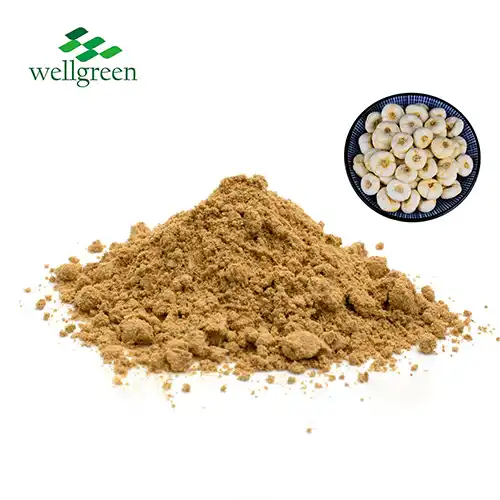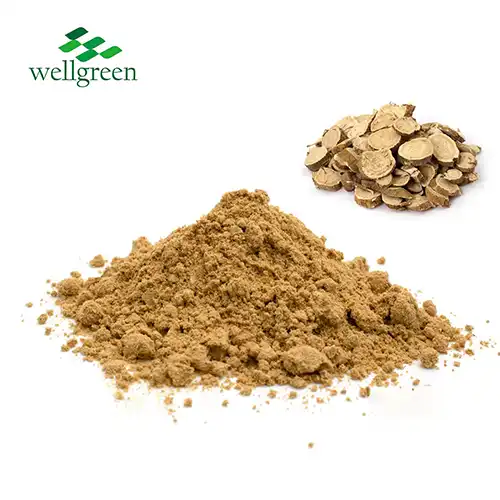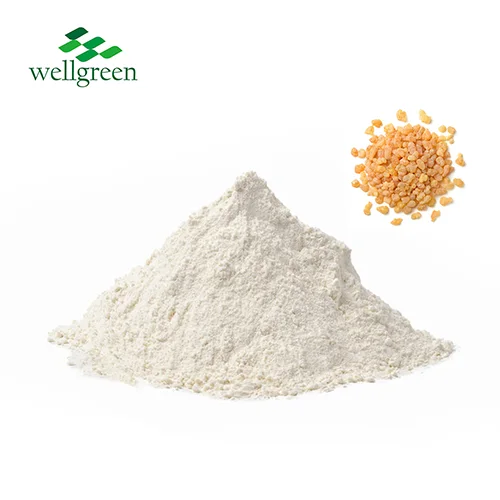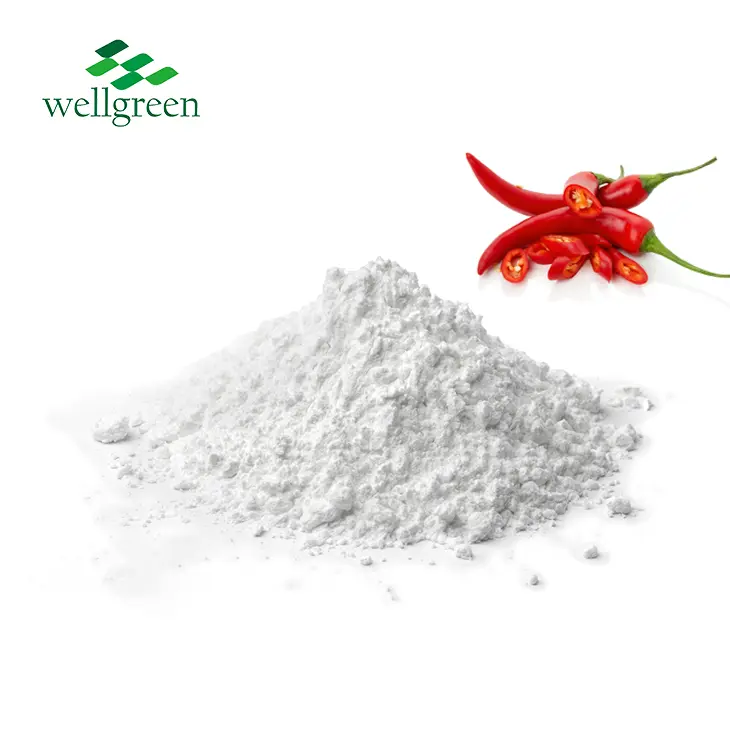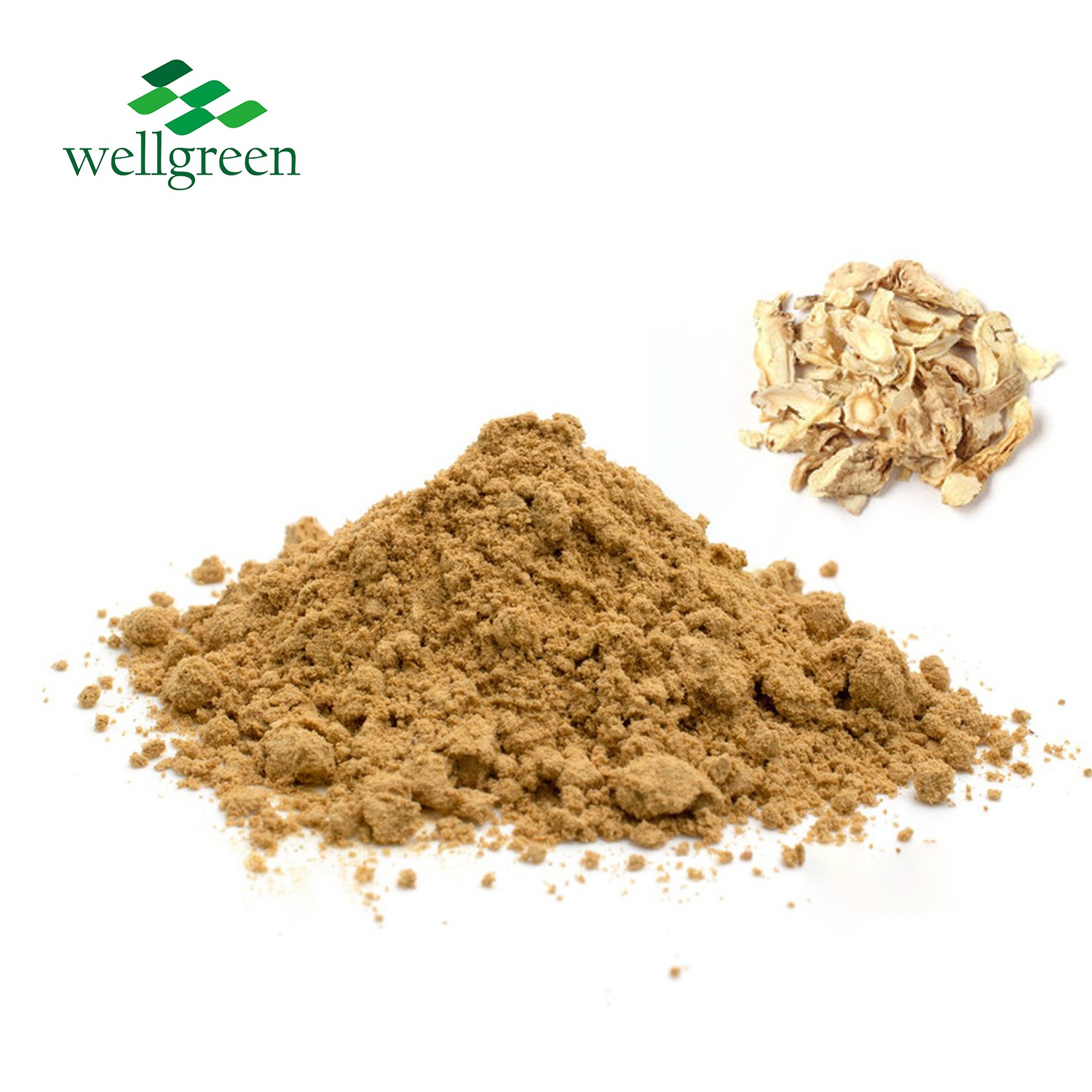What is Ecdysone?
2023-11-23 10:25:54
Ecdysone is a steroid hormone that plays a vital role in regulating growth, development, and reproduction in insects, crustaceans, and plants. First discovered in insects in the 1950s, ecdysone has emerged as an important signaling molecule with numerous medical, agricultural, and biotechnological applications. This article will provide an in-depth overview of ecdysone, from its chemical structure and biosynthesis to its diverse biological functions and promising applications across multiple fields.
Introduction
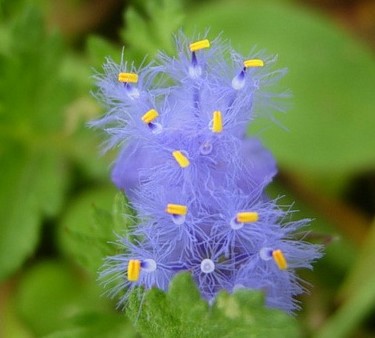 Ecdysone is a steroidal prohormone and the precursor of the major insect molting hormone 20-hydroxyecdysone. In insects,20 beta hydroxy ecdysone coordinates developmental transitions including larval molts, metamorphosis, and reproduction. The hormone is produced in specialized endocrine glands and released into the insect's blood to initiate physiological changes by binding to target tissues. Ecdysone helps regulate the expression of a vast number of genes involved in insect maturation and adaptation.
Ecdysone is a steroidal prohormone and the precursor of the major insect molting hormone 20-hydroxyecdysone. In insects,20 beta hydroxy ecdysone coordinates developmental transitions including larval molts, metamorphosis, and reproduction. The hormone is produced in specialized endocrine glands and released into the insect's blood to initiate physiological changes by binding to target tissues. Ecdysone helps regulate the expression of a vast number of genes involved in insect maturation and adaptation.
In plants, ecdysone has growth-promoting and protective effects against both abiotic and biotic stressors. The discovery of ecdysone's multifaceted roles has opened up intriguing possibilities for insect control in agriculture, plant productivity enhancement, and innovative therapeutic approaches in medicine. However, the applications of ecdysone also warrant careful evaluation of potential ecological impacts and ethical concerns.
Exploring the Nature of Ecdysone
Ecdysone belongs to a group of hormones called ecdysteroids, which are structurally similar to cholesterol-derived steroid hormones in vertebrates. It was first isolated and characterized from silkworm pupae in 1954 by Karlson and Butenandt, who named it ‘ecdysone’ from the Greek word ecdysis meaning molting.
Ecdysone plays a central role in regulating and coordinating insect development. By stimulating or suppressing specific genes, it controls diverse processes including larval molting, metamorphosis to the pupal and adult stages, reproduction, and diapause - a period of dormancy. The timing and release of ecdysone must be precisely controlled to ensure normal growth.
In plants, ecdysone is involved in various physiological processes like cell elongation, root growth, embryo development, and reproduction. It also enables plants to adapt to stressors in their environment by triggering protective metabolic responses.
Chemical Structure and Biosynthesis of Ecdysone
Ecdysone belongs to the ecdysteroid family of polyhydroxylated sterols. Its chemical name is 2β,3β,14α,22R,25-pentahydroxycholest-7-en-6-one. The steroidal structure comprises of four fused hydrocarbon rings with hydroxyl groups at specific positions.
In insects and crustaceans, beta ecdysone is synthesized from dietary sterols in endocrine tissues like the prothoracic glands, ovaries, and testes. Cholesterol is converted into various intermediates through a series of enzyme-catalyzed reactions. The main biosynthetic pathway involves 7-dehydrocholesterol being hydroxylated and oxidized to eventually yield ecdysone.
Plants produce ecdysone through both the mevalonate pathway in the cytoplasm and a non-mevalonate pathway in the plastids. Key enzymes like SMT and SMO catalyze steps in the conversion of cycloartenol to ecdysone (7). Environmental factors like temperature, nutrition, and stress can affect ecdysone levels by regulating gene expression of biosynthetic enzymes.
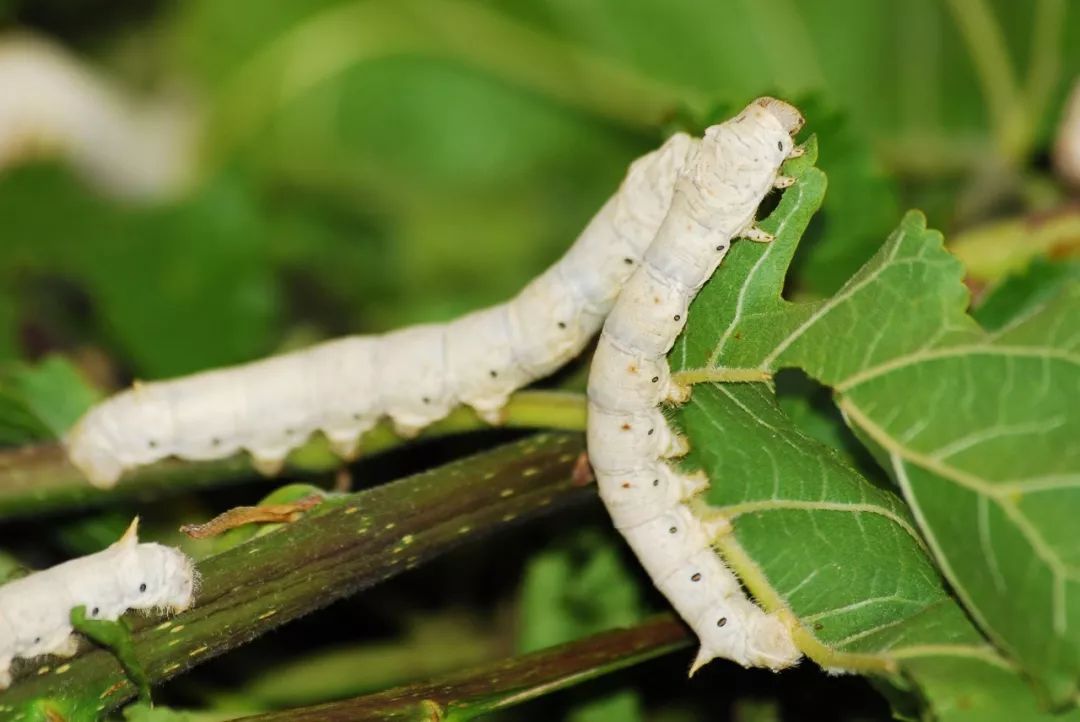
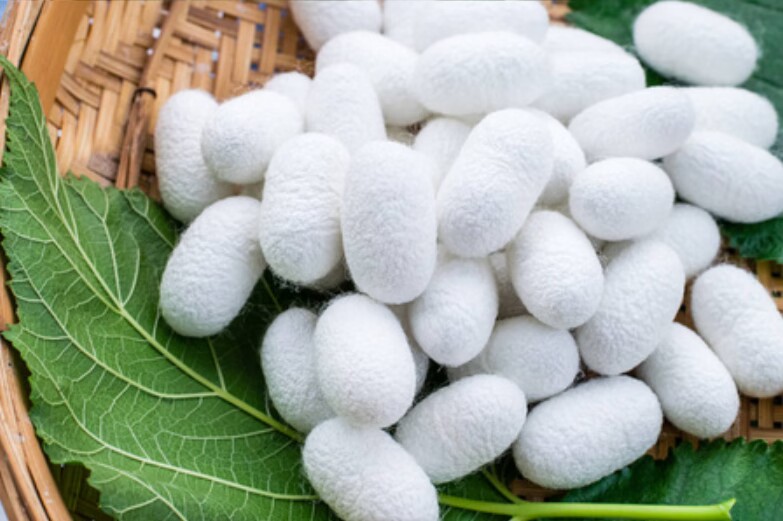
Functions and Effects of Ecdysone in Insects
In larval and nymphal insects, ecdysone initiates the periodic shedding or molting of the exoskeleton. It ends larval growth by shifting metabolism from feeding to wandering behavior in preparation for metamorphosis (8). Ecdysone stimulates the production of a new exoskeleton underneath the old one.
In the final larval instar stage, a large ecdysone pulse triggers the larva to stop feeding and search for an ideal pupation site. At the onset of metamorphosis, ecdysone induces puparium formation and profound structural changes to transform into an adult. The timing and magnitude of ecdysone release are precisely controlled.
Ecdysone and juvenile hormones work together to coordinate developmental transitions. Juvenile hormone prevents precocious metamorphosis during early larval stages. The drop in juvenile hormone just prior to pupation allows ecdysone to induce metamorphosis. In adult females, ecdysone stimulates vitellogenesis or egg production.
Ecdysone agonists can disrupt insect development and are studied as alternatives to conventional pesticides. They may be less toxic to non-target species However, insects can develop resistance to ecdysone agonists.
Ecdysone in Plants: Growth Regulation and Defense Mechanisms
In plants, ecdysone promotes cell elongation, differentiation, and growth. Ecdysone regulates processes like seed germination, root growth, flower development, senescence, and abscission. It helps mobilize nutrients to support the rapid growth of seedlings and activate defense mechanisms.
Ecdysone levels increase dramatically when plants are under biotic stress like insect herbivory. This triggers the production of defense compounds that fend off attackers or reduce insect feeding. Ecdysone also enables plants to withstand abiotic stresses including salinity, drought, extreme temperatures, and chemical toxins.
Foliar sprays containing ecdysone have been shown to increase crop yields, accelerate flowering, and improve resistance to pathogens. However, synthetic analogs can sometimes interfere with plant reproduction. Proper application methods and dosages are needed to harness the benefits of ecdysone in agriculture.
Medical and Biotechnological Applications of Ecdysone
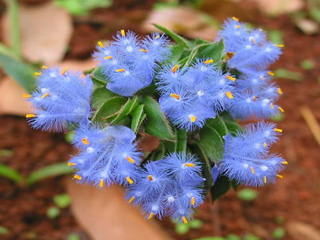 Ecdysteroids exhibit anabolic effects in mammals, enhancing protein synthesis and physical performance without androgenic side effects. Ecdysone analogs are being investigated for therapeutic uses like supporting muscle growth or treating diabetes and neurological conditions.
Ecdysteroids exhibit anabolic effects in mammals, enhancing protein synthesis and physical performance without androgenic side effects. Ecdysone analogs are being investigated for therapeutic uses like supporting muscle growth or treating diabetes and neurological conditions.
In biotechnology, ecdysone provides a powerful inducible gene expression system in cell cultures and transgenic organisms. The ecdysone receptor can be engineered into cells along with a gene of interest. Adding ecdysone triggers dose-dependent activation of the target gene. This allows precise control over timing and levels of gene expression.
Ecdysone is also utilized as a non-toxic “chemical ligand” to selectively destroy engineered cells after they have served their purpose, such as in cell therapy applications (16). Further ecdysone-based innovations are being explored in synthetic biology, protein engineering, and biosensors.
Safety Considerations and Ethical Implications
While ecdysone shows promise in many domains, it warrants judicious use. In agriculture, effects on non-target species and resistance development must be evaluated. As an analog of human hormones, its medical applications require stringent safety profiling. Environmental impacts of large-scale use including residue accumulation and food chain exposures should be investigated.
Ethical questions center on insect welfare, equitable access to ecdysone-based therapies, transparency regarding genetically engineered organisms, and preventing misuse of biotechnologies. Policy measures are needed to ensure the responsibly balanced advancement of ecdysone-related innovations. Public engagement and transparent assessment of risks versus benefits is crucial.
How is ecdysone made?
In insects, ecdysone is synthesized from dietary cholesterol or phytosterols in the prothoracic glands, ovaries, testes, and other tissues through a series of enzymatic steps (20). The main biosynthetic pathway involves the conversion of 7-dehydrocholesterol to various intermediates including ketodiol, ketotriol, 2-deoxyecdysone, and finally ecdysone through the actions of specific cytochrome P450 enzymes and other catalysts. Environmental cues like temperature and nutrition regulate ecdysone biosynthesis by controlling the expression of the enzymes involved.
In plants, ecdysone is produced through both the mevalonate pathway in the cytoplasm and the non-mevalonate pathway in plastids starting from farnesyl pyrophosphate or geranylgeranyl pyrophosphate. Enzymes like SMT, DWF4, and SMO mediate a series of reactions that transform cycloartenol into ecdysone. Light exposure, developmental signals, and stress factors modulate ecdysone biosynthesis in plants.
What does the hormone ecdysone regulate?
 Ecdysone regulates a diverse array of developmental, physiological, and cellular processes (23):
Ecdysone regulates a diverse array of developmental, physiological, and cellular processes (23):
-Growth and molting in immature insects
-Metamorphosis from larval to pupal to adult forms
-Reproduction and egg production in adult insects
-Growth, cell differentiation, and organ formation in plants
-Stress adaptation responses in plants
-Activation of defense compound synthesis in plants
-Gene expression via ecdysone nuclear receptors
-Protein synthesis and enzyme function
-Metabolism of lipids, carbohydrates and proteins
-Oxidative homeostasis and detoxification
-Cell proliferation, differentiation, and apoptosis
-Axonal remodeling and dendrite pruning in insects
-Behaviors related to reproduction and food-seeking
What is the difference between juvenile hormone and ecdysone?
While both are key hormones in insects, juvenile hormone and ecdysone have contrasting roles:
-Ecdysone initiates molting and metamorphosis whereas juvenile hormone prevents metamorphosis.
-In pre-adult stages, ecdysone induces molting while juvenile hormone suppresses maturation between molts.
-High ecdysone and low juvenile hormones induce metamorphosis. The opposite ratio maintains the larval stage.
-Ecdysone is a steroid hormone while juvenile hormone is a sesquiterpenoid.
-Ecdysone is produced in the prothoracic glands while juvenile hormone is synthesized in the corpora allata.
-The effects of ecdysone are mediated by nuclear receptors. Juvenile hormone uses membrane receptors.
-Ecdysone levels peak at distinct times. The juvenile hormone has relatively low fluctuating levels.
-In adults, ecdysone drives reproduction while juvenile hormone regulates behaviors related to foraging and reproduction.
Their coordinated action allows insects to transition between life stages. The interplay between ecdysone and juvenile hormones ensures proper timing of development.
Conclusion
Ecdysone is a multifunctional hormone that coordinates diverse and complex developmental processes in insects and plants. Our deepening understanding of ecdysone signaling pathways and functions continues to unravel its profound influence on organismal biology. Leveraging the applications of ecdysone in agriculture, medicine, and biotechnology holds great promise but also warrants responsible oversight regarding efficacy, safety, and ethical considerations. Further research and open dialogue are critical to creating a balanced framework for translating ecdysone science into effective innovations for the benefit of human health and ecological wellbeing.
WELLGREEN is an innovation-driven manufacturer of herbal extracts since 2011 certified by ISO9001:2015, ISO22000, HALAL, KOSHER, HACCP, and Organic Certificate. If you need Ecdysone powder, please contact us immediately, by E-mail:wgt@allwellcn.com We can supply customized service as per your request.
References
1. https://www.ncbi.nlm.nih.gov/pmc/articles/PMC4255510/
2. https://www.sciencedirect.com/science/article/pii/S0065280608600193
3. https://www.annualreviews.org/doi/10.1146/annurev-ento-020117-043231
4. https://www.frontiersin.org/articles/10.3389/fpls.2018.01248/full


